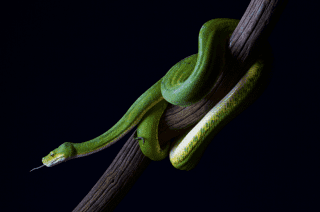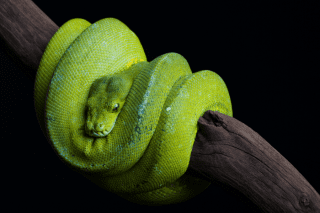Fun facts
Ready to strike
Green tree pythons have a special hunting technique. They wrap themselves around branches and dangle the tip of their tail to lure their prey, then strike out and constrict it.
Emerald boa
In a phenomenon known as parallel evolution, green tree pythons look and act very much like the emerald tree boa of South America, to which it is not closely related. This is because although they come from different continents, their habitats are so similar that it has resulted in them having very similar traits.
Camoflage
The green tree python’s vivid green colouration provides camouflage for them as they rest or move through the trees.


